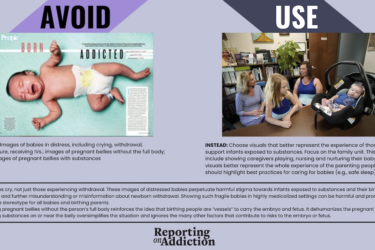
Homeless people in their 50s have more geriatric conditions than those who are decades older but have a roof over their heads, according to researchers at the University of California, San Francisco (UCSF).
Because of prolonged exposure to stress, those living in poverty often experience premature aging, also known as weathering. Weathering can dramatically impact those without stable housing, causing individuals to prematurely age by 10 to 20 years beyond their chronological age. In addition to premature aging, the stress of homelessness affects morbidity and mortality.
“Usually, we think of geriatric conditions as affecting much older adults in their 70s, 80s, and 90s,” said Rebecca Brown, M.D., M.P.H., assistant professor of medicine in the Division of Geriatrics at the University of California, San Francisco and an author of the paper. “We found these conditions were very common in homeless adults with an average age of just 58.” She said health and social systems need to be more responsive to the challenges of this vulnerable population.
Researchers followed 350 homeless people ages 50 years and older in Oakland, Calif., and analyzed their primary living situation over the previous six months. Subjects were recruited from shelters, recycling centers, food lines and homeless encampments to better represent the population. Some 40 percent of reported difficulty with one or more activities of daily living. One-third said they have fallen in the past six months. About a quarter had cognitive impairment, 45 percent had vision impairment, and 48 percent had urinary incontinence.
The study appeared in the Feb. 26 online edition of The Gerontologist.
Although many safety net programs exist for the elderly, those between ages 50 and 64 often fall through the cracks despite having similar physical health issues as those much older, due to daily stress, poor nutrition, and adverse living conditions. In 2011, almost one-quarter of U.S. individuals below the poverty level were over the age of 62, demonstrating the financial instability of older and elderly adults according to the National Health Care for the Homeless Council (NHCHC). And as this article in ThinkProgress points out, nearly half of the country’s homeless population is over age 50. This NPR report examines the plight of one aging Baltimore couple.
The sheltered U.S. homeless population ages 51 to 61 grew from 18.9 percent of total sheltered persons in 2007 to 22.3 percent in 2010. The average age was 53, with a life expectancy of 64 according to the Corporation for Supportive Housing and Hearth, Inc, a non-profit organization that helps elders prevent or get out of homelessness. Most cities, large and small, are struggling with this issue. As KPCC reported, a 2014 assessment in Los Angeles found that more than half the women living on Skid Row were over age 50. Reports from Wichita, Kansas, and Kailua, Hawaii, describe similar challenges.
The path to homelessness
The National Health Care for the Homeless Council says there are two main routes into homelessness for this population group — the aging of the chronically homeless and first-time homelessness among older adults. In the first scenario, trends among the general aging of the population are mirrored among homeless adults. They are unable to break the cycle of homelessness and continue aging into their 50s and 60s without stable housing.
Alternatively, older individuals who may have previously had stable housing find themselves living on fixed incomes. The high cost of housing is proportionally greater than for the general population, resulting in housing loss. Housing cost burden exists when a household pays more than 30 percent of their income on housing costs. This burden is considered “severe” when the portion of a household’s income dedicated to housing exceeds 50 percent. People find themselves having to choose between housing and other basic needs, such as food and medical care. Compounding this, access to affordable senior living can be challenging, with an average wait time lasting three to five years.
A similar study of homeless adults in Boston in 2011 found higher rates of geriatric syndromes, including functional decline, falls, frailty and depression, than among seniors in the general population. Many of these conditions can be easily treated if found and addressed proactively.
Without access to affordable housing and the services they need to stabilize, many among this population will not live to become part of the 65 and older group, according to a report from the Corporation for Supportive Housing and Hearth, Inc., a Boston non-profit that supports homeless elders. Older adults who are experiencing homelessness have three to four times the mortality rate of the general population due to unmet physical health, mental health, and substance use treatment needs.
The combination of issues typically associated with homelessness, such as mental health and substance abuse, with those related to aging, such as reduced mobility and a need for assistance with daily activities, requires providers of housing and services to this population to develop creative solutions. The sheltered homeless population age 51 to 61 has grown from 18.9 percent of total sheltered persons in 2007 to 22.3 percent in 2010.
Adaptations to traditional ways of providing services for homeless people are needed for the aging population, who may require assistance with activities like using the toilet and are at higher risk of falling, said Margot Kushel, MD, a professor of medicine at UCSF and senior author of the Oakland study.
One option for communities to better serve chronically homeless older adults can be to adapt permanent supportive housing that meets the needs of an aging homeless population. This would include services such as personal care attendants, and features such as grab bars in bathrooms. Even short-term solutions, like homeless shelters, will need to adapt for the needs of this burgeoning, at-risk population.
Journalists: what is your community doing to address the needs of the older homeless population. Are there specific programs? Are shelters adapting physical space? Are unique supportive housing options available?







